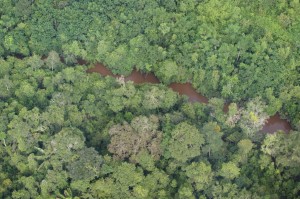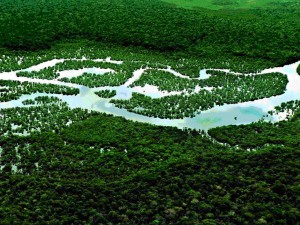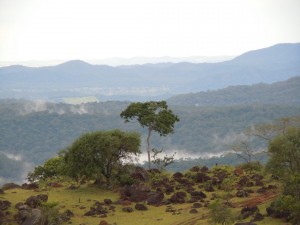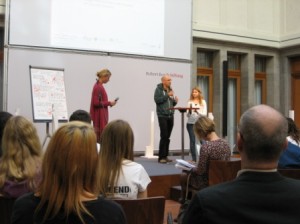New Directions for the Brazilian Amazon
The Amazon rainforest is spread out over nine national states of the South American continent. As trees bind carbon dioxide (CO2), the Amazon forest plays a crucial role in climate protection measures. Home to 60 percent of the world’s rainforest area, Brazil contains the largest part of this precious ecosystem.
GLOBAL IDEAS asked Brazilian forest activist Pedro Soares to write a guest article for our blog. Pedro stresses that we can only protect the Amazon by providing an adequate income to those living in the forest.
By Pedro Soares
The Brazilian Amazon area covers about 50 percent of Brazil’s territory. That is a total an area of 4,196,943 square kilometers.
The biggest stock of tropical forest in the world has always been seen as a barrier to regional economic development. In fact, deforestation occurs mainly due to an economic rationale: the forest does not provide sufficient income for landowners and forest dwellers, when compared to the income they could obtain for more profitable activities such as logging, agriculture or cattle ranching. But the lack of an economic value for the stand forest is the main caveat towards the promotion of forest conservation policies and programs.
The Brazilian Amazon forest gets smaller every year. Deforestation happens at an average rate of 0,56 percent annually – that is an equivalent of 1,762,995 hectares per year.
Moreover, the deforestation is responsible for most of greenhouse gases emitted in Brazil, corresponding for 58 percent of national total emissions. Halting deforestation is one of the best strategies for mitigating the effects of climate change in this country.
The Amazonas State
The State of Amazonas is the largest state in Brazil and still holds 97 percent of its remaining forests (around 1,235,316 square kilometers of forests), although the pressure for clearing new areas is increasing in recent years. Until the year of 2002, the State Governor used to distribute “chainsaws” in political campaigns to promote deforestation and the “economic development” of this region.
Due to intense pressure of civil society, new directions for promoting the local development are coming up. At the beginning of 2003, Amazonas State started a process for valuing the stand forest as a mechanism for promoting sustainable alternatives for generating income for local people.
The REDD+ mechanism
This new mechanism that rewards those who promote positive actions for reducing deforestation is known as REDD+ (Reducing Emissions from Deforestation and Forest Degradation). If applied correctly, it might be one of the best opportunities to keep the biggest natural heritage of humanity alive: The Amazon Rainforest.
Pedro Soares, 26 years old, is a researcher at the Brazilian Institute for Conservation and Sustainable Development of Amazonas (IDESAM). Idesam was the technical coordinator of the two first forest protection REDD+ projects validated in Brazil – the Juma REDD Project (2008) and The Surui Forest Carbon Project (2012). Pedro is also a British Council Climate Champion.









